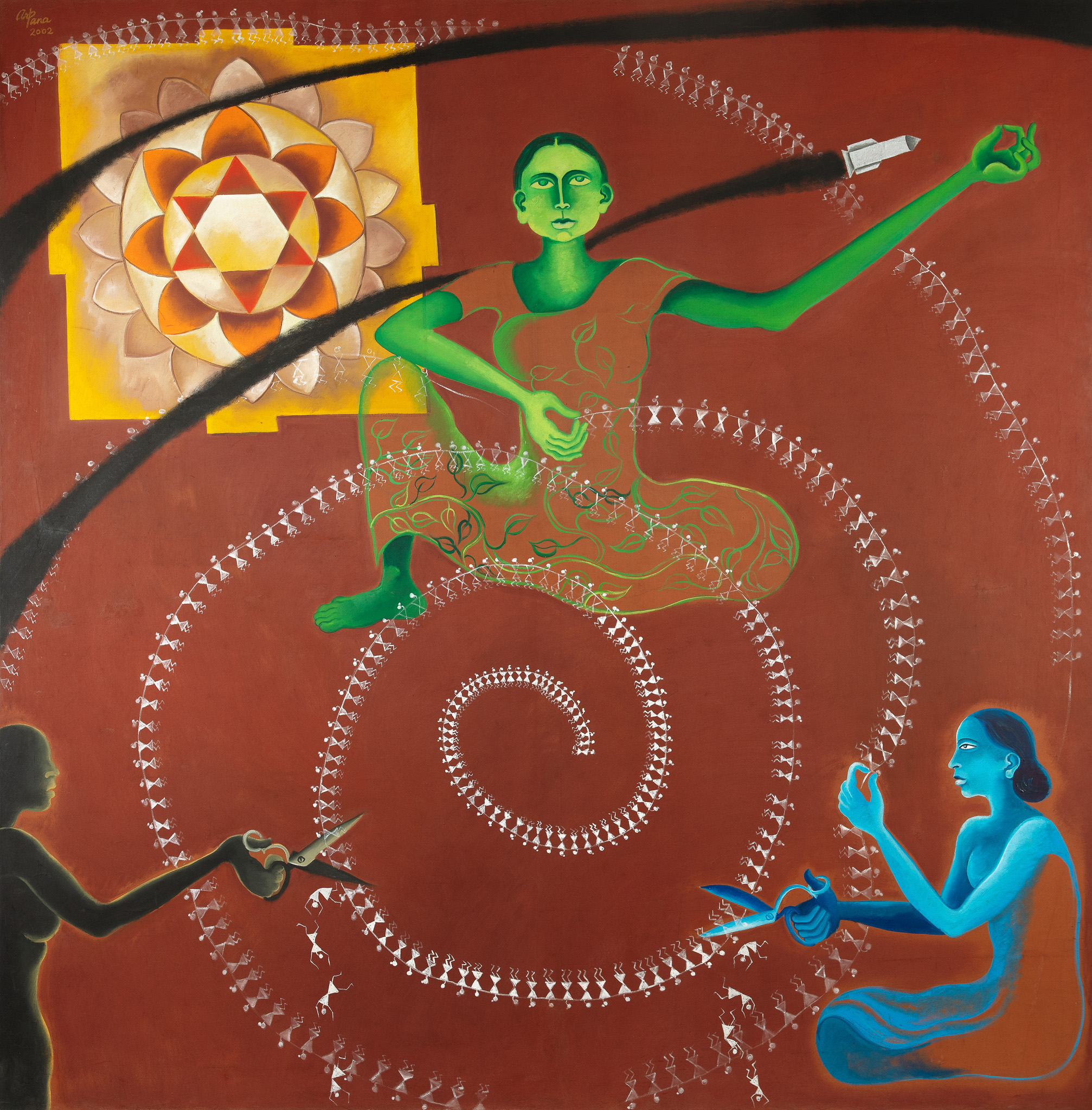Of Women by Women: South Asian Feminist Art and Artists from the Hundal Collection
February 21, 2025- December 2025
Second Floor Exhibition
Of Women by Women: South Asian Feminist Art and Artists from the Hundal Collection draws on feminist art history to examine how South Asian women artists, both within the region and across the diaspora, navigate their creative identities in a world shaped by patriarchal structures and racial biases. Rooted in Linda Nochlin’s 1971 essay "Why Have There Been No Great Women Artists?" and extended by Prachi Priyanka’s 2021 work Quest for Selfhood: Women Artists in the South Asian Visual Arts, this exhibition explores frameworks for growing feminist representation in global art institutions.
Artists featured in the show illuminate how the intersections of gender, race, and identity have shaped, and continue to shape, their own careers and those of fellow South Asian feminist creatives. These selected works from the Hundal Collection offer diverse insights into the complexities of the feminine experience through the gaze of South Asian women. From challenges of professional legitimacy to navigating societal expectations, we aim to elicit conversations about which artists get recognized, how they are viewed, and how much agency an artist has over their own vision.
The addition of biographical displays and portraits foregrounds the individual journeys of each artist, highlighting their unique contributions to contemporary art. Ultimately, this exhibition is a celebration of the resilience and creative ingenuity of South Asian women artists as they assert their presence, challenge institutional biases, and explore new avenues for amplifying their presence to a wider audience.
Featured Artists
Sobia Ahmad (Pakistani American)
"All of us have complex histories, ancestors, stories and personal narratives. It's not black and white. Your life isn't black and white and mine isn't either."
Sobia Ahmad is an interdisciplinary artist who investigates the transcendental power of everyday experiences, objects, and rituals through photography, film, and in particular, social practice.

B. Prabha (Indian)
"It is my aim to paint the trauma and tragedy of women."
B. Prabha was a prolific artist, best known for her elegant depictions of rural Indian women. Working primarily in oil, she began her practice at a time when women were heavily oppressed in society.

Faiza Butt (Pakistani-British)
"The history of art is really about the male gaze. The critique of gender is very biased by how men look at the world, and how they influenced us to what power is."
Faiza Butt works across multiple mediums, producing elaborately rendered drawings, large-scale paintings, and ceramics. Her painting style is a hybrid of the par dokht miniature technique and the pixel structure of photographs.

Arpana Caur (Indian)
"I always like dualities in painting. I paint life and death, time - day and night - and similarly violence, non-violence, environment and the destruction of the environment."
Drawing on an extensive history of miniature painting, folk art, and Punjabi literature, Caur addresses themes of violence, women's issues, spiritualism, time, and the environment as she uses her paintings to engage with ongoing social issues in the world around her.

Ruby Chishti (Pakistani-American)
"...waste may become 'food' for new cycles of growth; life can be infinite and cloth can be immortal."
Ruby Chishti is a sculptor and installation artist who primarily creates her pieces using organic materials and fabric taken from secondhand or discarded clothing.


